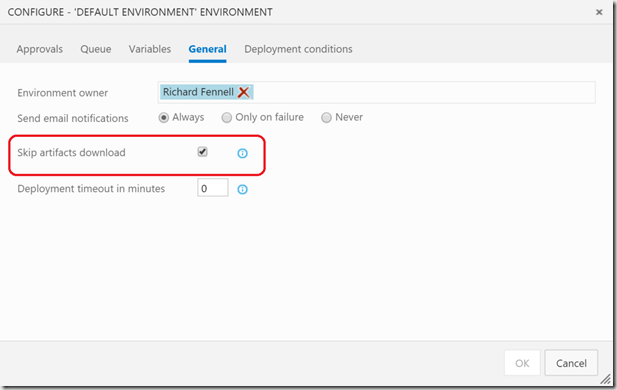A vNext build task to get artifacts from a different TFS server
With the advent of TFS 2015.2 RC (and the associated VSTS release) we have seen the short term removal of the ‘External TFS Build’ option for the Release Management artifacts source. This causes me a bit of a problem as I wanted to try out the new on premises vNext based Release Management features on 2015.2, but don’t want to place the RC on my production server (though there is go live support). Also the ability to get artifacts from an on premises TFS instance when using VSTS open up a number of scenarios, something I know some of my clients had been investigating.
To get around this blocker I have written a vNext build task that does the getting of a build artifact from the UNC drop. It supports both XAML and vNext builds. Thus replacing the built in artifact linking features.
Usage
To use the new task
- Get the task from my vNextBuild repo (build using the instructions on the repo’s wiki) and install it on your TFS 2015.2 instance (also use the notes on the repo’s wiki).
- In your build, disable the auto getting of the artifacts for the environment (though in some scenarios you might choose to use both the built in linking and my custom task)
- Add the new task to your environment’s release process, the parameters are
- TFS Uri – the Uri of the TFS server inc. The TPC name
- Team Project – the project containing the source build
- Build Definition name – name of the build (can be XAML or vNext)
- Artifact name – the name of the build artifact (seems to be ‘drop’ if a XAML build)
- Build Number – default is to get the latest successful completed build, but you can pass a specific build number
- Username/Password – if you don’t want to use default credentials (the user the build agent is running as), these are the ones used. These are passed as ‘basic auth’ so can be used against an on prem TFS (if basic auth is enabled in IIS) or VSTS (with alternate credentials enabled).
When the task runs it should drop artifacts in the same location as the standard mechanism, so can be picked up by any other tasks on the release pipeline using a path similar to $(System.DefaultWorkingDirectory)SABS.Master.CIdrop
Limitations
The task in its current form does not provide any linking of artifacts to the build reports, or allow the selection of build versions when the release is created. This removing audit trail features.
However, it does provide a means to get a pair of TFS servers working together, so can certainly enable some R&D scenarios while we await 2015.2 to RTM and/or the ‘official’ linking of External TFS builds as artifacts

